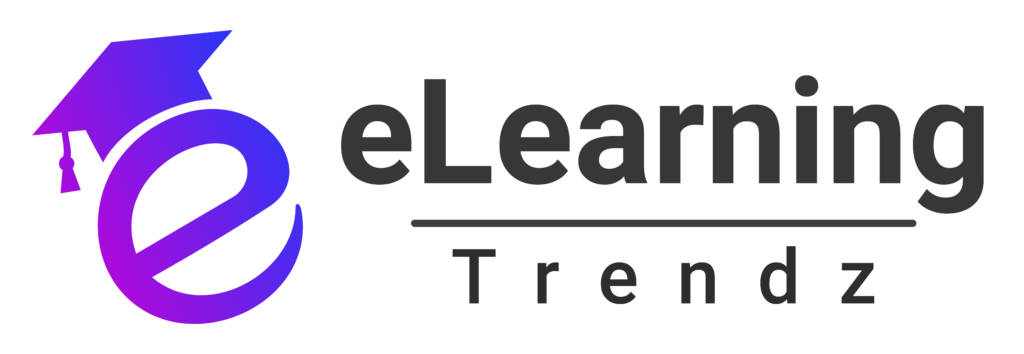Choosing an online course creator isn’t just another tech decision — it’s the foundation of your entire eLearning strategy. The right platform can cut production time in half, elevate learner engagement, and ensure everything you build runs smoothly inside your LMS. The wrong one? It slows you down, limits creativity, and creates compatibility headaches you don’t need.
With dozens of tools out there — from simple drag-and-drop interfaces to advanced, logic-driven authoring platforms — knowing what to look for makes your decision easier and far more strategic.
This guide walks you through the must-have features, breaks down the strengths of leading tools, and helps you match the right course creator to your specific needs.
7 Essential Features to Look For in an Online Course Creator
Before comparing tools, build your criteria. These features matter the most:
1. A Smooth, Beginner-Friendly Course Builder
Look for:
Drag-and-drop layouts
Ready-made templates
Easy customization without coding
Why it matters: A clean, intuitive interface shortens the learning curve and helps teams build faster — even without design or technical skills.
2. Helpful AI Capabilities
Look for:
Auto-generated outlines
Quiz and assessment creation
AI voiceovers or text-to-speech
File-to-course conversion (PDFs, PPTs → full courses)
Why it matters: AI cuts manual work dramatically, especially for organizations creating training regularly or at scale.
3. SCORM / xAPI Compatibility
Look for:
SCORM 1.2 and 2004 export
Optional xAPI support
Why it matters: Most LMS platforms still rely on SCORM. Without it, your course may not track progress, completions, or scores.
4. Accessibility-Ready Design
Look for:
Captions, transcripts, alt text
WCAG compliance
Multilingual export
Why it matters: Accessibility is no longer optional. Inclusive courses support every learner and help organizations stay compliant.
5. Collaboration Tools for Teams
Look for:
Real-time co-authoring
Version history
Commenting and review workflows
Why it matters: Large teams need smoother approvals and faster builds across departments.
6. Analytics and Learner Insights
Look for:
Engagement tracking
Completion rates
Assessment performance
Why it matters: Analytics help you refine, fix gaps, and measure whether your training actually works.
7. Pricing That Matches Your Reality
Look for:
Free or trial plans
Transparent tiers
Unlimited export options
Why it matters: Not every team has enterprise-level budgets. Choose a tool that supports both growth and long-term affordability.
Top Online Course Creators Compared
Below is a clean, narrative-style comparison based on features, strengths, and ideal use cases — no table included.
1. Paradiso Authoring Tool
Best for: Teams that want AI-powered creation, SCORM support, and a free plan
Paradiso Authoring Tool stands out for offering a permanent free plan plus powerful AI features that speed up course creation drastically. It includes storyboard generation, quiz creation, AI spokesperson videos, text-to-speech in 140+ languages, and automatic conversions of PDFs and PowerPoints into interactive SCORM courses.
Strengths:
Strong AI automation
Free forever plan
Easy drag-and-drop
Excellent accessibility and multilingual features
Full SCORM export
Limitations:
Not ideal for extremely complex or highly customized projects
2. Articulate Storyline 360
Best for: Organizations that need maximum customization and advanced interactivity
Storyline is the powerhouse of modern eLearning — perfect for complex branching scenarios, simulations, and layered interactions.
Strengths:
Deep customization with triggers, layers, and conditions
Massive asset library
Studio-quality interactions and animations
Great team collaboration
Limitations:
Steep learning curve
Premium pricing
3. Adobe Captivate
Best for: Software training, simulations, and responsive learning
Captivate is known for its software recording capabilities and device-responsive layouts.
Strengths:
Best-in-class software simulations
Affordable compared to Storyline
Advanced conditional logic
Strong interactive elements
Limitations:
Less intuitive for beginners
Smaller asset library
4. Easy Generator
Best for: Global teams that need multilingual content fast
Easy Generator focuses on simplicity and multilingual deployment with strong enterprise security.
Strengths:
Very easy to use
Multilingual conversion
Strong security compliance
Rapid course creation
Limitations:
Limited advanced customization
Smaller user community
5. Mini Course Generator
Best for: Creators who want branding control and SEO benefits
This tool stands out because it lets you host on your own domain, optimize individual courses for SEO, and customize pages more flexibly than most competitors.
Strengths:
Custom branding and domain support
SEO settings for each course
Digital badges & personalization
Good automation (Zapier, Make)
Limitations:
Smaller presence in enterprise environments
Limited documentation on deep LMS integrations
Inside Look: How Paradiso Simplifies Course Creation
1. Convert Old PDFs & PPTs into Courses Instantly
Upload a file → AI reorganizes it → SCORM-ready course.
It even adds learning objectives, generates quizzes, and produces AI narration.
2. Build Adaptive Learning Paths Automatically
AI Tutor identifies what learners struggle with and adjusts support without manual intervention.
3. Turn Ideas into Storyboards in Seconds
Add a rough prompt — the system creates a structured course outline ready for refinement.
These workflows save days of manual design and enable faster content rollout.
Best Practices for Implementing Any Course Creator
Regardless of which platform you choose, keep these principles in mind:
Define clear learning objectives first
Use AI for drafting, but rely on human review for quality
Ensure SCORM compatibility if using an LMS
Maintain accessibility standards
Track analytics and improve continuously
Final Thoughts: Your Best Course Creator Depends on Your Needs
There’s no single “best” tool — there’s only the best tool for you.
Brand-forward creators love Mini Course Generator.
Global teams lean toward Easy Generator.
Simulation-heavy training teams prefer Captivate.
Highly interactive learning designers choose Storyline.
Organizations looking for an AI-driven, budget-friendly option consistently pick Paradiso.
Start by identifying your top 3–5 priorities.
Try free trials.
Test your real workflows.
Then choose the solution that supports your goals today — and your growth tomorrow.
















